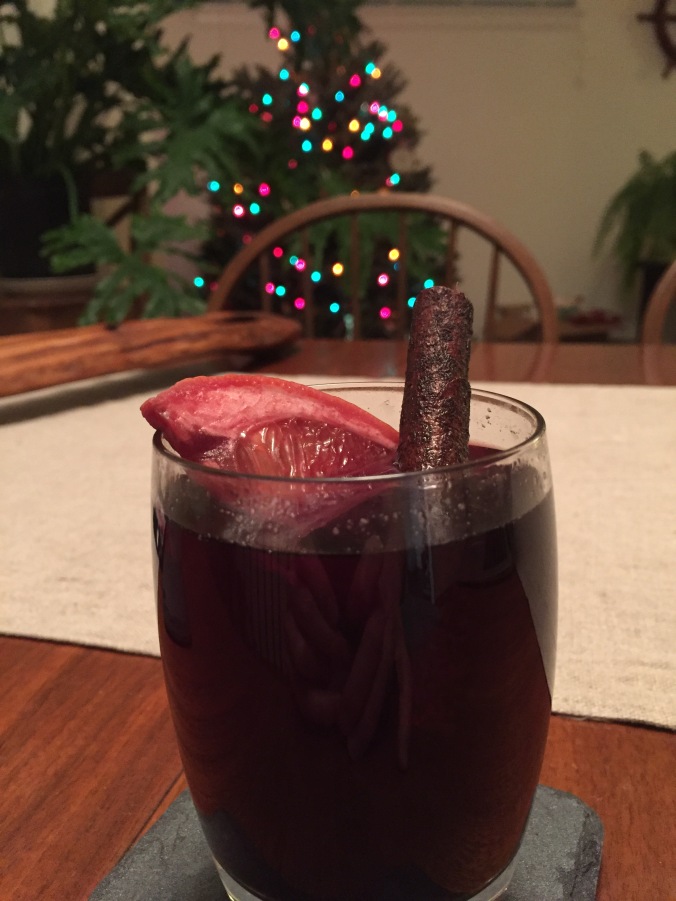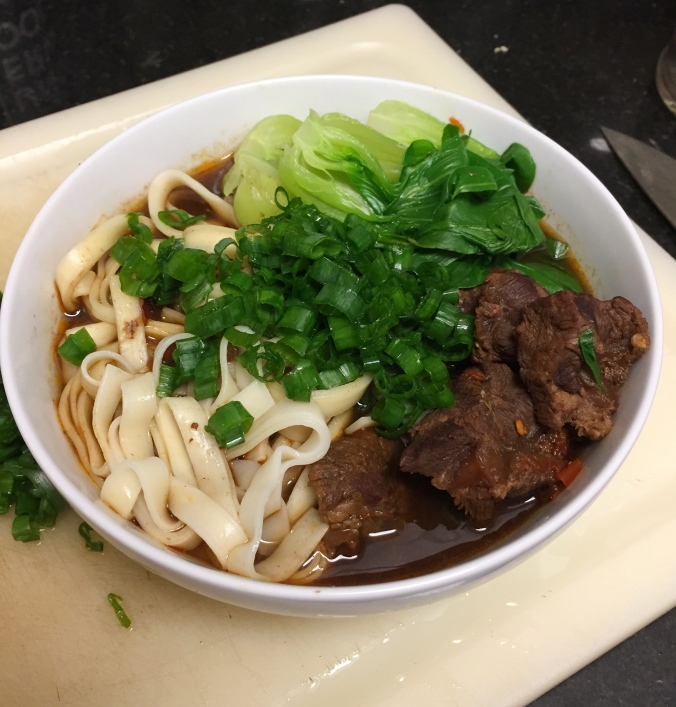I first encountered mulled wine over a decade ago, at a Christmas market in tiny Rothenburg ob der Tauber, Germany. I say ‘encountered’ because I honestly can’t remember if I tasted any – I was on a trip with my school orchestra at the time and was a bit of a goody-two-shoes, so I doubt I had the guts to sneak even a sip of alcohol in front of teachers. That said, I definitely remember the smell – boozy, vaguely sweet, spicy with cloves and anise. Inhaling that scent while wandering in the shadows of buildings that looked like gingerbread houses, browsing through stalls of handmade wooden ornaments, candied nuts, and nutcrackers was like walking through a Christmas story. I eventually needed something warm to hold so badly that I settled for hot chocolate. They use the good stuff over in Germany – real chocolate melted down into hot milk, poured into plastic red cups so flimsy that I wondered if they would melt from the heat.
These days, I still have the wooden ornaments I brought back from Rothenburg, and I am more than old enough to trim the tree with a mug full of mulled wine in hand. This year marks our first married Christmas, and the first year we’ve spent the actual holiday together, so we’ve been test-driving some new holiday recipes, evaluating for tradition-potential. Our families had very different holiday culinary traditions – my parents have always done a Thanksgiving redux – a roast turkey complete with all the trimmings – while Dennis grew up toasting over a giant hot-pot feast. This year we ate ourselves under the table with a giant portion of prime rib, but I suspect we may trial something different next year. Regardless of what main dish we eventually settle on, I suspect that mulled wine, in some iteration, will be a keeper.
Since you end up adding sugar, citrus, and handfulls of spices, we recommend choosing a cheaper bottle for mulling, though still one you would be willing to drink on its own – we opted for a bottle of 3-buck chuck (love being back in the land of Trader Joe’s). Also, while you can let this simmer away for hours, be aware that some of the alcohol might boil off while cooking. We suspect that we mostly had spicy grape juice by the end of our simmer, as we polished off an entire bottle with nary a buzz between us, and we really don’t drink often enough to be able to pull that off.

Mulled wine
- 1 750ml bottle of red wine
- 1/3 – 1/2 C demerara sugar, to taste
- 3T mixed whole cloves, allspice, cardamom pods, star anise
- 3 cinnamon sticks
- 1 orange or grapefruit, quartered
Pour the wine into a crock pot or large stock pot and put on low heat. Tie whole spices in muslin or cheesecloth and add to the wine. Add sugar and stir until dissolved. Add citrus quarters. Heat until fragrant and spiced to taste (sample as you go!)
-S

